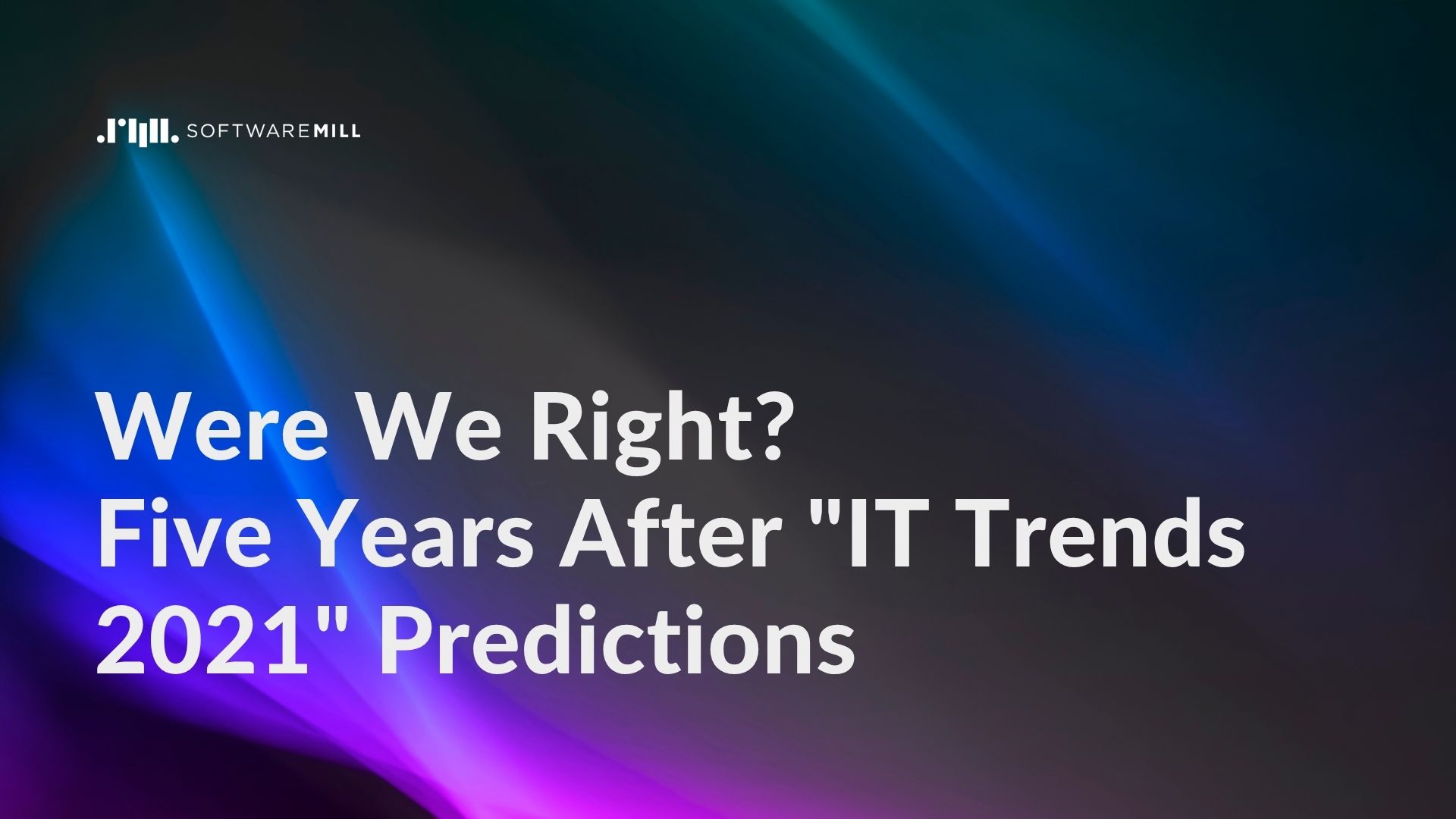Were We Right? Five Years After "IT Trends 2021" Predictions

When we published "IT Trends to Watch in 2021" back in December 2020, the world was in the middle of massive uncertainty. COVID-19 had forced everyone into remote mode. Digital transformation became suddenly urgent, and the IT landscape felt like it was reshaping in real-time.
Five years later, in 2025, it’s time to look back at what we predicted, and to see where we were spot on, where we were overly optimistic, and where reality took a slightly different path.
Take a look at newest IT Trends to Watch in 2026.
Where we were right
AI and ML everywhere
We believed AI and machine learning would move out of research labs and into real-world products, even reaching the edge, mobile devices, IoT, and embedded systems.
That was very much spot on.
From image recognition running directly on smartphones to on-device language models, smart cameras, and AI-powered apps, the edge AI is no longer futuristic. Companies are increasingly blending cloud-based models with lightweight edge inference. We may have slightly underestimated how fast AI would grow, and just how much generative AI would achieve, but the underlying direction was spot on.
Streaming data and real-time everything
Back in 2020, we wrote about the shift from batch processing to streaming data pipelines. At the time, Kafka and Flink were already gaining traction.
Fast-forward to today: real-time analytics, event-driven architectures, and streaming platforms are standard in fintech, e-commerce, logistics, and IoT. The tooling matured dramatically, and "real-time" became a default expectation, not a luxury.
That one aged very well.
Cybersecurity as everyone’s job
We predicted that cybersecurity would become a top priority especially in software supply-chain security and DevSecOps practices. Sadly, the industry validated that prediction faster than we’d have liked.
The SolarWinds attack, Log4Shell, and numerous open-source dependency breaches made it clear: security isn’t a checklist; it’s part of everyday engineering. Today, with security shifting left, few serious teams ship code without integrating security into CI/CD and dependency scanning.
This one wasn’t just correct, it became essential.
Remote work and digital-first culture
We claimed that remote work wasn’t a temporary pandemic fix, but a long-term transformation.
Nowadays, hybrid and remote work are the norm, not the exception. The tooling has improved, a distributed culture has matured, and "digital-first" is now a given across industries. The only caveat is that the world is shifting more towards a hybrid model than we initially expected, with major companies publicly announcing their return-to-office policies.
Still, the overall prediction holds: remote work is here to stay, at least as part of the week.
Where we were (partly) wrong
Blockchain beyond the hype
In 2020, we were optimistic that blockchain would mature, moving past crypto hype toward enterprise adoption and decentralized identity.
Five years on, we’re still waiting for that mainstream enterprise moment.
Yes, there are interesting use cases in supply chain tracking, finance, and digital identity, but blockchain didn’t become the backbone of everyday enterprise systems. Instead, it stayed niche, useful in specific contexts but not the universal disruptor we once imagined.
Verdict: promising technology, still struggling to find the right problems to solve.
IoT and 5G
We wrote that IoT was on the brink of exploding, with 5G as the great enabler. That was… optimistic.
IoT did grow steadily, and industrial applications (especially in manufacturing and logistics) are thriving. However, on the consumer side, fragmentation is still a nightmare. Too many standards, too many "smart" devices that don’t talk to each other.
5G also turned out to be more evolution than revolution, great for bandwidth and latency, but not the transformative platform we envisioned back then. The ecosystem is maturing, just slower than we thought.
Cloud-agnostic dreams vs cloud reality
In 2020, we imagined a world where hybrid and cloud-agnostic setups would free teams from vendor lock-in. Technically, it’s possible; practically, not so much.
While Kubernetes, Terraform, and IaC have made cross-cloud portability easier, the adoption of cloud-specific services (such as BigQuery, Lambda, or DynamoDB) is too strong. Most companies are multi-cloud in theory, but locked-in by design choices.
Lesson learned: cloud-agnostic remains an ideal, not a norm.
Key takeaways & reflections after five years
Looking back, I’m proud of how much we got right, especially around AI, data streaming, security, and culture.
The things we underestimated weren’t wrong; they were just slower, more complex, or shaped by economics and regulation rather than pure technology. They still have a chance to mature in the years to come.
If these five years taught us anything, it’s that predicting technology is hard, but getting the timing right is even harder.
Reviewed by: Michal Ostruszka


